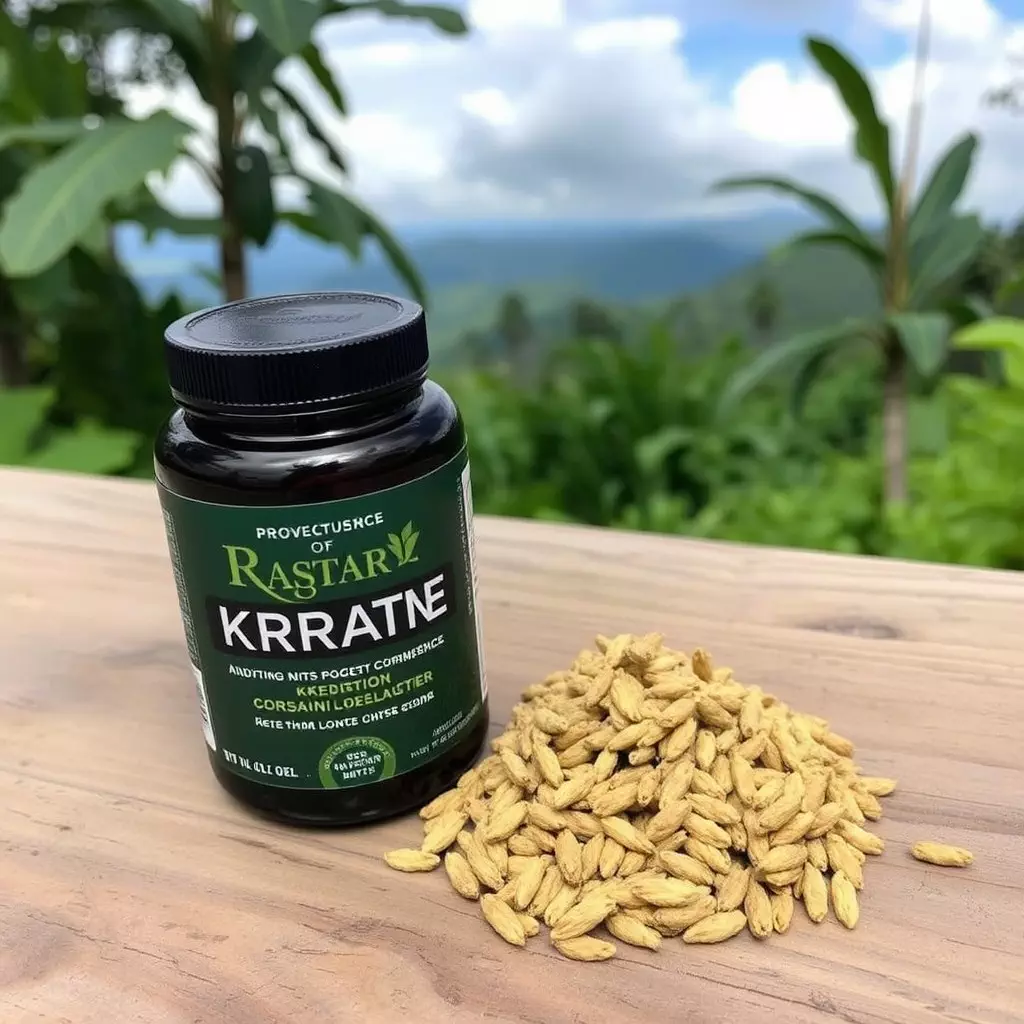Chronic pain management involves a multifaceted approach, combining pharmaceuticals, physical therapy, lifestyle changes, and alternative treatments like Kratom and essential oils such as Diffuser Thieves. Kratom, from the Mitragyna speciosa tree, contains alkaloids like mitragynine and 7-hydroxymitragynine that may interact with opioid receptors for pain relief. Users report it can enhance mood and energy levels. However, its use must be carefully considered due to potential side effects and interactions, necessitating professional guidance. Diffuser Thieves oil is often used for aromatherapy, offering psychological benefits and stress relief, though its role in chronic pain management is still under investigation. Both Kratom and Diffuser Thieves can be part of a holistic pain management strategy when used responsibly and in conjunction with other treatments. It's crucial to adhere to legal regulations and consult healthcare professionals before incorporating these natural remedies into your pain management plan, considering their varying effects on individuals. Integrating Kratom with complementary practices like physical therapy, nutrition, and stress management can create a comprehensive approach for pain relief, potentially enhancing the efficacy of treatment. Users may experience a synergistic effect by combining Kratom with Thieves Oil, which can promote relaxation and possibly improve mood, indirectly contributing to pain alleviation. Always consult healthcare professionals to ensure the safety and appropriateness of these treatments for your specific health needs.
Chronic pain is a pervasive challenge that affects millions worldwide, often leading to a diminished quality of life. In recent years, kratom has emerged as a potential natural alternative for managing this persistent condition. This article delves into the intersection of chronic pain management and the role kratom can play, offering insights into its scientific efficacy and how it may be harmonized with other complementary therapies. We will explore the mechanisms that contribute to kratom’s analgesic properties and provide guidance on incorporating it, alongside diffuser Thieves Oil Blend, into a comprehensive holistic pain management strategy. Join us as we navigate the potential benefits and considerations for those seeking alternatives to traditional pain medication.
- Understanding Chronic Pain and Kratom's Role in Management
- The Science Behind Kratom for Pain Relief: Is it Effective?
- Integrating Kratom into a Holistic Pain Management Plan, Including the Use of Diffuser Thieves Oil Blend
Understanding Chronic Pain and Kratom's Role in Management

Chronic pain is a persistent and often debilitating condition that affects millions worldwide, marked by pain that lasts beyond the typical healing time. This type of pain can be the result of various underlying conditions such as arthritis, fibromyalgia, neuropathy, or injury. It significantly impacts quality of life, leading to fatigue, depression, and anxiety, and often necessitates a comprehensive approach to management that includes pharmaceutical interventions, physical therapy, lifestyle changes, and alternative treatments. Among the alternatives, kratom has emerged as a potential option for pain relief, with its active compounds, mitragynine and 7-hydroxymitragynine, believed to interact with the brain’s opioid receptors. These alkaloids may offer analgesic effects, helping to alleviate chronic pain symptoms.
Kratom, derived from the leaves of the Mitragyna speciosa tree, has been traditionally used in Southeast Asia for its stimulant and sedative properties. In the context of chronic pain management, kratom may serve as an adjunct therapy to conventional treatments, offering a more holistic approach. Users often report relief from pain, with some also noting improvements in mood and energy levels. However, it is crucial to approach the use of kratom with caution, as it can interact with other substances and may have side effects. Additionally, regulatory bodies continue to study kratom for its safety and efficacy. Those considering kratom as part of their pain management strategy should do so under the guidance of a healthcare professional, ensuring that it complements rather than replaces prescribed treatments. The role of diffuser thieves oil, which is not related to kratom but often discussed in the realm of natural remedies for health concerns, is typically for aromatherapy and may provide some psychological comfort or stress relief, although its direct impact on chronic pain is less clear.
The Science Behind Kratom for Pain Relief: Is it Effective?

Kratom, a tropical evergreen tree native to Southeast Asia, has been the subject of growing interest in the realm of natural pain management. The effectiveness of kratom for pain relief is rooted in its active compounds, alkaloids such as mitragynine and 7-hydroxymitragynine. These alkaloids interact with the body’s opioid receptors, which can provide pain-relieving effects. Research has indicated that kratom may help alleviate chronic pain by modulating these receptors, thereby influencing the pain signals sent to the brain.
The science behind kratom’s analgesic properties is complex and still being studied to fully understand its mechanisms. Users report that kratom helps manage various types of pain, including neuropathic and musculoskeletal conditions. However, it’s crucial to approach the use of kratom with caution due to its potential for side effects and interactions with other medications. As with any treatment option, the efficacy of kratom can vary among individuals, and it should be considered as one part of a comprehensive pain management plan. Additionally, the legal status of kratom varies by region, and users must adhere to local laws and regulations when considering its use for pain relief.
Integrating Kratom into a Holistic Pain Management Plan, Including the Use of Diffuser Thieves Oil Blend

Incorporating Kratom into a holistic pain management plan can be a nuanced approach, requiring careful consideration of its potential benefits and limitations. For individuals seeking natural alternatives to traditional pharmaceuticals, Kratom may offer relief from chronic pain. However, it’s crucial to approach its use responsibly, adhering to legal guidelines and dosage recommendations. When used as part of a comprehensive pain management strategy, Kratom can complement other modalities such as physical therapy, proper nutrition, and stress-reduction techniques. One such complementary practice is the use of essential oils, particularly the popular diffuser blend known as Thieves Oil. This proprietary oil blend by Young Living contains a unique mixture of Clove, Lemon, Cinnamon Bark, Rosemary, and Eucalyptus radiata (Blue), known for its soothing and purifying properties. Integrating Thieves Oil into a Kratom-based pain management plan can enhance the overall wellness experience by promoting relaxation and potentially improving mood, which indirectly supports pain relief. The aromatic compounds in Thieves Oil, when diffused, can influence the olfactory system, possibly leading to a reduction in pain perception through psychological effects. Users often report a sense of calm and relief when using Thieves Oil in conjunction with Kratom, suggesting a synergistic effect that could be beneficial for those managing chronic pain. As with any holistic approach, it’s important to consult healthcare professionals before integrating Kratom and diffuser Thieves Oil into your pain management regimen to ensure safety and efficacy tailored to your individual health needs.
In conclusion, chronic pain is a pervasive challenge that can significantly affect one’s quality of life. The exploration of alternative management strategies, such as the use of kratom, offers a promising avenue for those seeking relief beyond conventional methods. The scientific evidence suggests that kratom may indeed be an effective component in addressing pain, though further research is necessary to fully understand its potential and risks. Integrating kratom into a comprehensive, holistic approach, including the innovative use of diffuser Thieves Oil Blend, can create a synergistic effect for managing pain. This multifaceted approach allows individuals to explore options that may provide comfort and improve their daily functioning. It is crucial for those considering such an approach to consult healthcare professionals to ensure safe and effective management of their chronic pain.






